Roundtable: Should manga be flipped?
Recently, Good Comics for Kids contributor Lori Henderson wrote about her disappointment that newer editions of Rumiko Takahashi’s manga are still being flipped. With a new Takahashi manga on the way, I thought this would be an interesting time to discuss whether manga should be left in its original right-to-left orientation or flipped so it can be read left-to-right.
Brigid: For my own reading, I prefer unflipped manga because it’s truer to the artist’s intent, and I have no problem reading right to left. Also, it’s cheaper for the publisher, which helps keep the cover price low. However, works that may have broad appeal to non-manga readers may do better if they are flipped. Would the New York Times have done a lengthy article on A Drifting Life if it read right-to-left? I think not; an 800-page unflipped manga would be too much for most people. I think Rumiko Takahashi’s work falls into that category as well. Her art is pretty straightforward and easy to read, so her books are a good introduction to manga and graphic novels in general, and the flipped art supports that. Her work is really popular with teens—my daughter used to go out and buy five volumes of InuYasha at a time—and because it’s easy to read, it’s easy to share with friends who are new to the medium.
ADVERTISEMENT
ADVERTISEMENT
Kate: I agree with you, Brigid. Though I prefer the artwork in its original orientation, I don’t mind reading a book with flipped images. And if flipping the artwork makes a good series more accessible to readers—especially those who have little awareness of what manga is—I think it’s worth the extra time and expense. I rationalize my feeling this way: it’s impossible to produce a "pure" or "authentic" English-language edition of a Japanese graphic novel. Translators and editors make hundreds of small decisions in the course of adapting a script, all of which are geared towards producing a story that’s idiomatic and accessible to American audience. The final product is faithful to the original, but there will always be variations. If the text isn’t going to be an exact replica, then it bothers me much less to think that t he images have been altered, too.
he images have been altered, too.
As for the new VIZBIG edition of InuYasha, I’m more concerned with the print quality than I am with the orientation of the images. John Jakala pointed out that the current edition of InuYasha looks very smudgy on the page; I’d love to see those images cleaned up and reproduced on higher quality paper. And if Viz is going to be giving InuYasha the omnibus treatment, it would be nice to see them do the same for all of her works. Her short story collections are a terrific introduction to the medium, but they’re very hard to come by now that they’ve gone out of print.
Robin: There are a few points here to consider.
Brigid, I think you’re still right that a certain audience is very intimidated by unflipped manga and that if you want to connect with a broader audience, then flipping manga is more reasonable. I know manga fans will be disappointed, and I do think that it gives people less credit than perhaps they deserve for being able to adjust. Remember, I work in an area that serves a large Jewish population, and to them, right to left is not "backwards" as Hebrew reads in that direction. I find readers stumble more over blocks like cultural references and art style than the actual orientation of reading. It all depends on your experience and, I think, a reader’s willingness to try new things and not give up. That is certainly not guaranteed, but I think with encouragement new readers are willing to take the plunge more often than not.
I personally do not find it so arduous to reorient myself either way—when I open a manga now, I expect it to be right to left, but if it’s not, I just flip over my way of thinking about it, and steam on ahead. On the authenticity question—a translation is always going to be a translation from another language, and as we are talking about sequential art, it’s not like we shouldn’t expect there might be changes in the visual translation as well as the textual.
There’s always a divide between what fans desire and what will bring a product to a wider audience. Hitting the balance enough to satisfy both parties is nigh impossible.
On Takahashi herself, I will say at least in my library she’s a hit with older fans, but my teens are much less likely to check out her work. I’m not sure why—we have all of InuYasha, and it’s one that is more often on the shelf than checked out. Ranma 1/2 is more popular, and I’m just working on getting all of Maison Ikkoku, but she doesn’t leap off the shelf in the way other series currently do.
Eva: The trouble with living on the west coast is that you’ve all brought up the good points while I was still sleeping. So instead of a big, "me, too!" I’ll bring up a couple of "I wonder"-type questions. I don’t actually know the answers to any of these, so if you do, please let me know.

I’m wondering if 2007s release of Tekkon Kinkreet as a flipped manga was a deliberate attempt to attract non-manga fans. I ask this because, while the critics all seem to love seinen and josei (Suppli! Come back, Suppli!), titles in those two categories don’t sell nearly the number of books that shojo and shonen sell. So was Tekkon Kinkreet flipped to attract a more mainstream comics audience? One that might be attracted to the storyline, but be intimidated by having to read from right to left? One that would otherwise never pick up manga because it’s, you know, manga? (I say that knowing plenty of manga readers who would never pick up a superhero title because it’s, you know, about superheroes, so no flames, please.) I can tell you that I’ve gotten several adult readers to read Tekkon Kinkreet, who would never have read it otherwise, simply because the book is flipped.
I’m also wondering if the majority of manga readers really care about the right/left, left/right issue. I know there is a vocal group of manga readers who really, really care, the way Lori has made clear she does in her blog post. But what I see in the library are teens who easily transition between Fruits Basket and Dramacon, Bleach and Sidescrollers, Naruto and Star Wars: Clone Wars, Megatokyo and the early editions of Ceres (flipped) and the later editions of Ceres (unflipped). I’ve never heard an outcry in the stacks; never had a customer demand "real" manga. It’s just never come up. These people are just happy to read the stories, however they can get them. Are we discussing a problem that only exists for a vocal few? I know that when I read flipped manga I don’t do more than blink, shrug, and turn the book over. It just doesn’t register for me as an issue. But maybe I’m in the minority. Maybe this really is a Big Deal and I simply haven’t noticed.
Brigid: I actually think Suppli would have done well if they flipped it and put it next to the chick-lit. And I do believe Tekkon Kinkreet was flipped to reach out to a broader audience, just like Drawn & Quarterly’s Yoshihiro Tatsumi titles, much of Fanfare/Ponent Mon’s catalog, and some of Vertical’s Tezuka manga. These manga are aimed at older and fairly sophisticated readers, and the publishers clearly knew they would have crossover appeal.

Lori: I wrote my blog post as a passionate fan of manga (what my blog is for), so of course I want it as authentic as possible. But here’s something else to think about when flipping manga. It’s not just the image that’s affected when you flip it. Changing the orientation may make it easier for western audiences, but if the word balloons don’t follow the western way of reading, you’re going to have one very confused reader. Try reading Eagle: The Making of an Asian-American President. When the images get flipped, so do the word balloons, and when they appear on the same level, you’re reading the person’s response before the question is asked, etc. It still makes reading and understand difficult. While this may not affect an action manga like Inuyasha, it makes for several re-reads of a page in a wordy title, which is just as frustrating as going R to L.
Manga’s core audience, teens are still young and flexible enough to make the transition between L to R and R to L. It through my oldest daughter for the first one she read, but now it’s no problem, and didn’t seem to bother my oldest at all. But, hasn’t Yen Press shown, that if the material is compelling enough, orientation doesn’t matter? Into the Light is presented in its original R to L format, yet still seems to do well with it’s non-manga intended audience. Isn’t this because it’s a good story put in the child development section where people looking for information on autism would look and not with the rest of the manga? I think selling more mature manga is a matter of getting in the right sections of the store where the audience will be looking for books, not it’s reading orientation.

Eva: As Brigid did with Suppli, I wonder if the sales figures for With the Light would be different if the book had been flipped. It’s a look into the world of a family living with an autistic child, and each volume of the story is two inches thick. Convincing a non-comics reader that she should take time to not only learn to read comics but to learn to read them backwards is a daunting task, especially when the person you’re trying to convince is a busy mom. I’m not saying I think all manga should be flipped. The integrity of the artwork is important and if there is no need to flip then it shouldn’t happen. But sometimes flipping makes sense.
I agree with Lori that some manga better lend themselves to being flipped than others. But keep in mind that publishers are also getting much more adept at this whole licensing, translating, tweaking-for-English, flipping/not flipping thing. Eagle: The Making of an Asian-American President came out in 2000. This was early days in US manga publishing, when you think about it (the first volume of Fruits Basket came out in 2004). We can all remember instances where t-shirt slogans ended up written backwards, jewelry was worn on the wrong hand, etc. But since then we’ve seen books come out that have been expertly flipped and edited, making the words and images flow seamlessly. At this point, I’m willing to give VIZ the benefit of the doubt.
Robin: Just because I was curious, I checked out how various titles were doing in my library’s collection, mainly in the adult collection as that’s where a lot of the titles we’re talking about are shelved. I’ll be statistics girl again. I’m showing both the total circulation first, and then in parentheses the average circulation per month given how long we’ve owned a title.)
Tezuka’s various titles from Vertical (flipped): MW has circulated 10 times (about 2 times a month), Ode to Kirihito 20 times (3 times every four months), Buddha around 20 times per volume (1 time every two months) Tatsumi’s The Push Man and Other Stories has gone out 15 times (1 time every three months), Abandon the Old in Tokyo 17 times (1 time every two months), and Good-bye has gone out 4 times (1 time every two months). Tekkon Kinkreet circed 10 times (1 time a month.) Lone Wolf and Cub has gone out about 10 circs per volume (1 time every three months), and the second edition of Ghost in the Shell has circulated 21 times (1 time a month.)
On the unflipped side, Naoki Urasawa’s Monster has circulated around 15 times per volume (1 time a month), Dororo 6 times on average per volume (1 time a month), and Black Jack 5 times (1 time a month). With the Light has circed 4 times (1 time every four months), although generally I’ve heard a lot more buzz about other titles (and more crossover buzz) than I’ve heard about With the Light, so that may well have less to do with flipping and more with just awareness.

MW (intriguingly) starts at the top. Dororo, Black Jack, Tekkon Kinkreet, Monster, and Ghost in the Shell are all about equal in second place. Buddha, Abandon the Old in Tokyo, and Good-bye make up the second tier. Ode to Kirihito, Push Man, Lone Wolf and Cub go out steadily but less, and With the Light is circing the least. There are, of course, all sorts of factors other than flipping.
It’s much harder to think of unflipped titles that are, in fact, the same type of story or aimed at the same audience. Which just makes me wonder, once again, how much the publishers are selling the readers short by presuming that they can’t read from right to left. I too agree that there are titles that may reach a wider audience by being flipped, but my real question is how much longer that will be true, as all of the teens and younger adults who have no problem switching back and forth become adults and either don’t care about flipping or actively don’t like it. How long will flipping be necessary?
Kate: Many of the flipped books you list above, Robin, also benefit from deluxe packaging: some are hardcovers with attractive dust jackets, some have larger trim sizes, some use high-quality paperstock, and others include introductory essays by well-known comic artists or cultural pundits of one type or another. It’s hard to say if flipped images are the key selling point, or if the appeal lies with the presentation, or some combination of the two. My guess: these titles present themselves as suitably "adult," and thus something an Adriene Tomine or Art Speigelman fan might deem worthy of reading, whereas Naruto‘s packaging screams "product for teens."
ADVERTISEMENT
ADVERTISEMENT
Esther: I’m coming to this discussion very late in the game. Eva was sleeping… I was cleaning up from the holidays. I’m not a huge manga fan. I truly do prefer the "western style" comics. I hope that doesn’t make me sacrilege! And I learned to read Hebrew at the same time I learned to read English so reading left to right or right to left really made no difference to me. Until last year, I was still getting questions from students asking me why "these books were backwards?" Which I found very amusing, since I work with an age that seems to think they know it all! My point is, that I’m not sure flipped manga makes a huge difference to many readers out there. When students ask me why they don’t publish the books the "right way," I’ve always mentioned that it keeps the art work purer and that it also means we get the editions faster. This definitely satisfies them. When it comes up, I have some more points to add. Bottom line, my readers seem unbothered by the direction and I can’t think of any of my readers who would really care much about which direction they’re manga reads as long as they can read their manga!
Lori: If you really think about it, the most telling sign in the flipped/unflipped debate, is that manga didn’t sell well flipped, and did once they were unflipped. Part of that you can attribute to the price drop that came with unflipping, but even a less expensive book isn’t going to fly off the shelves if the content isn’t what the reader wants. While I think most people don’t care much about orientation, if you offered the same book in both formats, I do think the unflipped would sell more.
Kate: I’d certainly pick the unflipped version of a title if I had a choice, Lori, but many other factors contributed to the explosive growth in manga sales between 1998 and 2006. Tokyopop’s decision to release titles in a standard paperback book size made it possible to put their product in big chain stores like Borders, Barnes and Noble, and WalMart—something that Tokyopop, Viz, and Dark Horse had been unable to do when they were releasing series in magazine and floppy format. Moving to a "tankubon" format was more important in bringing manga to a wide audience than the artwork’s orientation. I do agree, however, that Tokyopop found a way to make unflipped artwork part of their "100% authentic manga" marketing strategy, thus bringing awareness of the flipped vs. unflipped debut to readers who might otherwise be indifferent.
Does anyone know how Dark Horse’s Blade of the Immortal performs, sales or circulation-wise? The creator of that series stipulated that he wanted the English edition to be flipped, so Dark Horse developed a meticulous process for ensuring the images’ orientation, word balloon placement, etc. made sense.
Filed under: Uncategorized
About Brigid Alverson
Brigid Alverson, the editor of the Good Comics for Kids blog, has been reading comics since she was 4. She has an MFA in printmaking and has worked as a book editor, a newspaper reporter, and assistant to the mayor of a small city. In addition to editing GC4K, she is a regular columnist for SLJ, a contributing editor at ICv2, an editor at Smash Pages, and a writer for Publishers Weekly. Brigid is married to a physicist and has two daughters. She was a judge for the 2012 Eisner Awards.
ADVERTISEMENT
ADVERTISEMENT
SLJ Blog Network
One Star Review, Guess Who? (#202)
This Q&A is Going Exactly As Planned: A Talk with Tao Nyeu About Her Latest Book
Parsing Religion in Public Schools
Environmental Mystery for Middle Grade Readers, a guest post by Rae Chalmers
ADVERTISEMENT

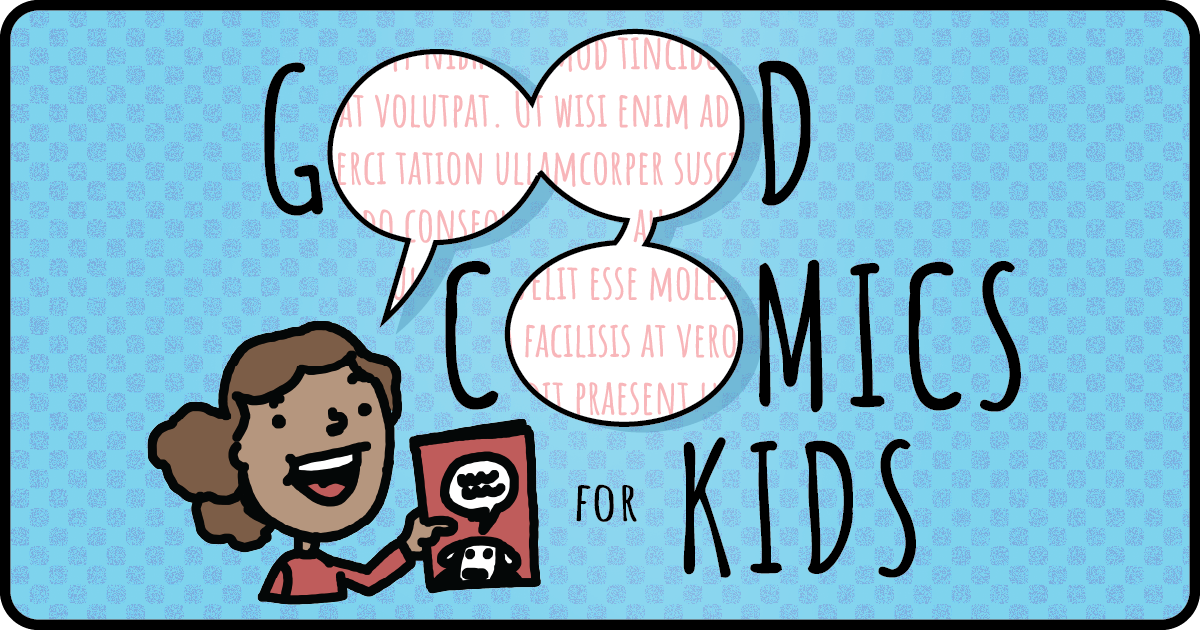

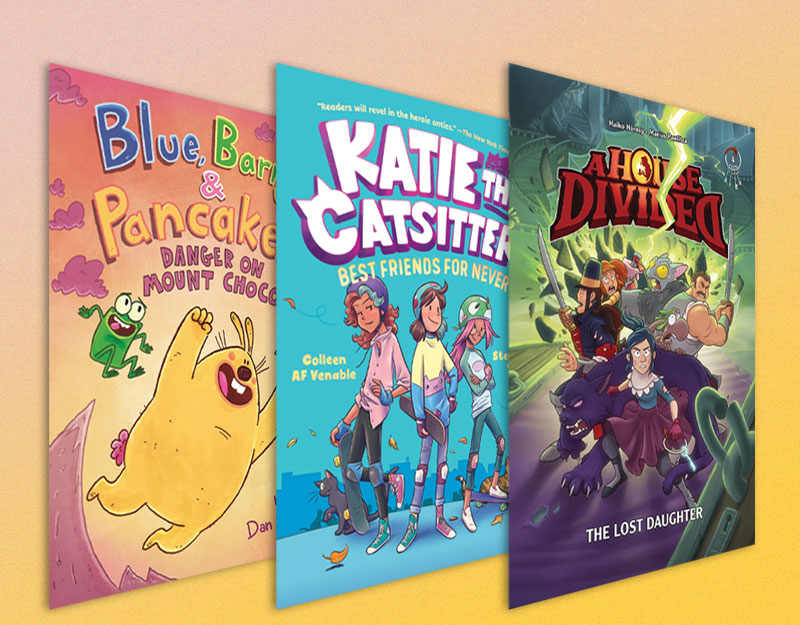
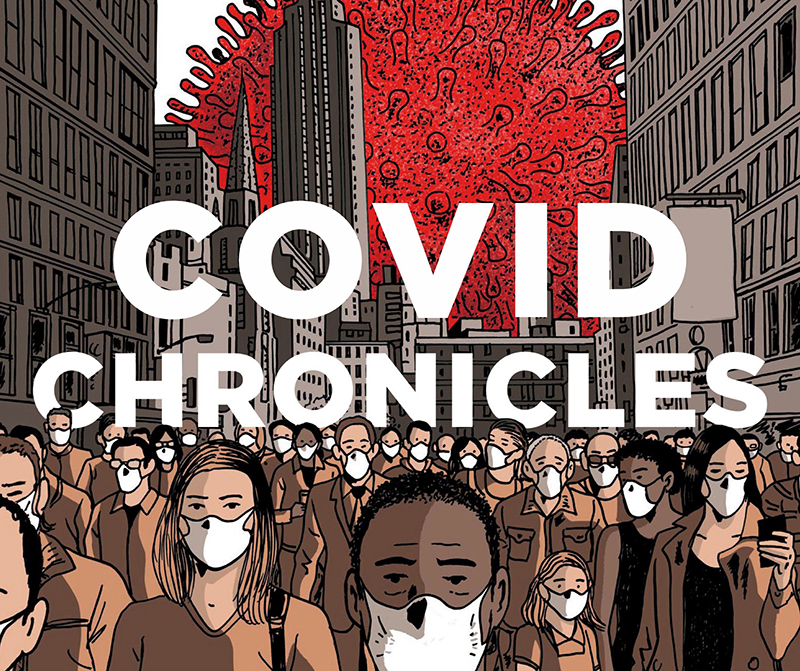
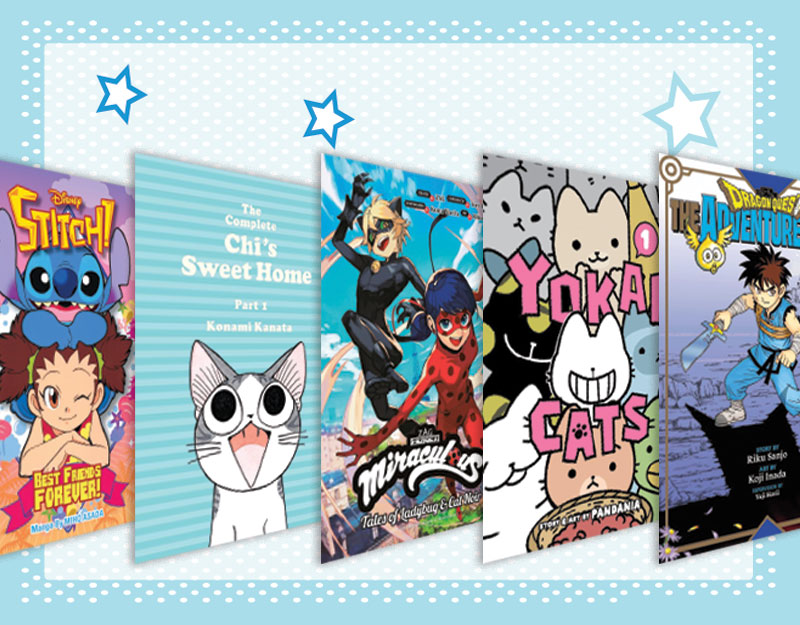
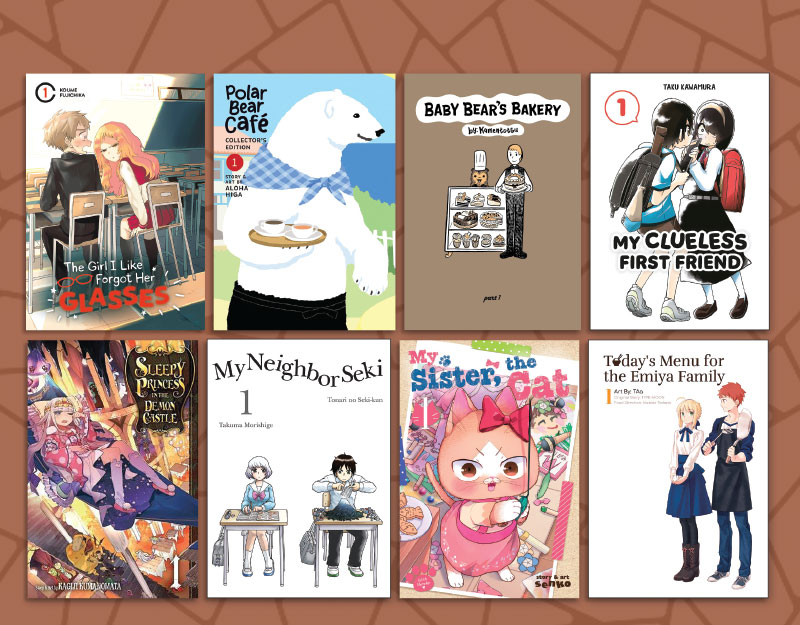
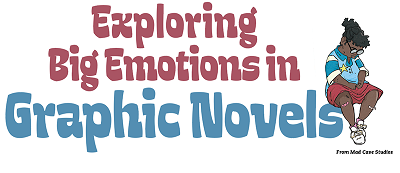
There are two different kinds of flipping. Firstly, you can flip the entire page; this does not result in any confusion as to the order of speech bubbles on a page, but makes everything else backwards (signs, handedness, etc). Secondly, you can flip the panels individually; this may stay true to the artist’s “intent”, but disrupts the eye’s flow along a page. If we are reading from left to right but the flow of each panel is right to left, it can cause some major comprehension problems (think: Appleseed). Sometimes it is impossible to flip the panels individually (some of Tezuka’s more unusual layouts in Phoenix, for example), and the only solution is to flip the whole page. Personally, I am more in favour of the former, rather than the latter. I feel that preserving the flow of the work is more important than making sure the handedness is correct.
One final, related point: I have a fundamental problem with unflipped work – the direction of text within the speech bubbles. If we are reading a panel from right to left, we have to jump across the bubble to begin reading. This makes for a disjointed reading experience as our eye is traveling in one direction to process images and in the other direction for text.
I personally read many manga, both flipped and unflipped. Each method has its pros and cons, but I feel that the best reading experience (for Western viewers) is the one that closest emulates the Western method of reading.
The last comment regarding Blade of the Immortal is exactly wrong. Dark Horse wanted to publish it flipped (mirror-reversed) and the author did not want his drawings mirror-reversed (for among other reasons, transforming the main character’s Manji symbol (reverse swastika) into a real (unreversed) swastika. So instead they painstakingly reverse the reading order of the panels, causing all types of havok with the readability and flow of the page. It would be so much easier to read if they either flipped it for real (mirror reverse) or left it unflipped, but instead we are left with a messy compromise. The same problems are present with Eagle- they mirror reversed most of the artwork but left pages with handshakes, American flags, car driving or obvious photo references (monuments etcetera) unflipped, resulting in the reading weirdness previously discussed. As the other commenter mentioned, something totally mirror-reversed has no reading problems because the flow is completely reversed as well. As a comic creator myself, I would very much prefer in the eventuality of some type of international publication of my work that the work be reoriented to flow in the same direction as the language of the reader.